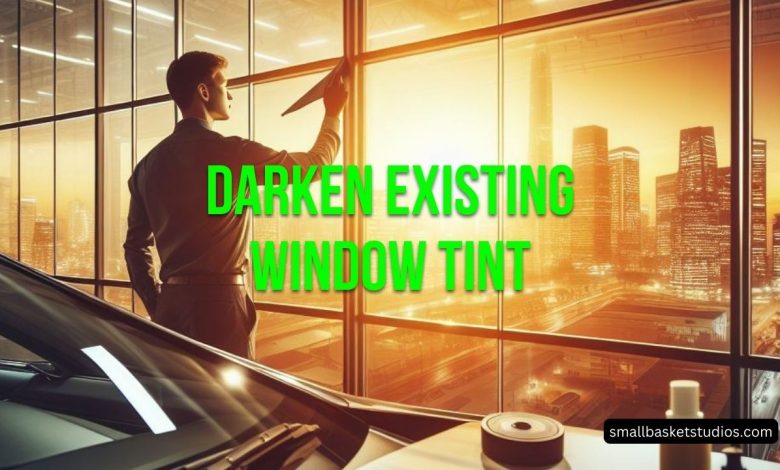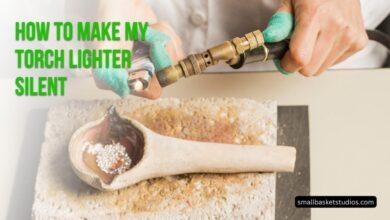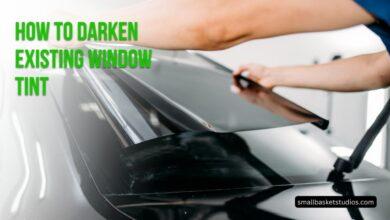How to Darken Existing Window Tint: A Professional Guide

Window tinting is a popular way to improve privacy, reduce glare, and protect the interior of a car or building from the sun’s harmful rays. However, over time, the tint may fade or become damaged, leading to a less effective and less attractive appearance. In such cases, it may be necessary to darken the existing tint to restore its effectiveness and appearance.
There are several methods for darkening existing window tint, each with its own advantages and disadvantages. One option is to apply an additional overlay film on top of the existing tint, which adds a layer of darkness and can also be used to repair any damage to the existing tinting. Another option is to use a tinting spray or dye, which can be applied directly to the existing tint to darken it.
Key Takeaways
- Darkening existing window tint is a common way to restore its effectiveness and appearance.
- There are several methods for darkening existing window tint, including adding an overlay film or using a tinting spray or dye.
- It is important to choose the right method and follow proper preparation and aftercare steps to ensure the best results.
Understanding Window Tinting
Window tinting is the process of applying a thin film made of polyester material onto the windows of a car or a building. The film comes in different shades and levels of darkness, and it can help reduce glare and heat, protect against harmful UV rays, add style, increase privacy, and save energy.
The darkness of the tint is measured by its Visible Light Transmission (VLT), which refers to the amount of visible light that can pass through the window tint. Higher percentages indicate lighter tints, while lower percentages indicate darker tints.
In most states, the legal limit for the VLT of front windows is 70%, while the rear windows and windshield can be tinted to a darker shade. However, it is essential to check the local laws and regulations before applying window tinting to avoid any legal issues.
There are different types of window tinting, including dyed, metalized, hybrid, and ceramic. Each type has its advantages and disadvantages, and the choice depends on the individual’s preferences and needs.
Dyed window tinting is the most affordable and provides a dark appearance. However, it can fade over time and may not be as effective in blocking heat as other types. Metalized window tinting is more durable and effective in blocking heat, but it can interfere with electronic signals and may not be suitable for newer cars. Hybrid window tinting combines dyed and metalized layers and provides a balance between the two. Ceramic window tinting is the most expensive but provides the best heat rejection and does not interfere with electronic signals.
Before applying window tinting, it is essential to clean the windows thoroughly and ensure that there are no air bubbles or debris trapped between the film and the glass. It is also recommended to hire a professional to install the window tinting to ensure that it is done correctly and avoid any potential issues.
Why Darken Existing Window Tint
Window tinting is a popular way to reduce heat and glare, as well as provide privacy and security. However, sometimes the existing tint may not be dark enough to meet the driver’s needs. In such cases, darkening the existing window tint may be the solution.
To Block Out UV Rays
Window tinting serves to block out ultraviolet (UV) radiation. Darkening your window tint can further increase the level of protection from UV radiation, which is a leading cause of skin cancer and other health problems. According to DIY Quickly, darkening the window tint can increase the UV protection by up to 99%.
To Reduce Heat Build-up
Another reason to darken existing window tint is to reduce heat build-up inside the car. Darker tint can block more sunlight, which reduces the amount of heat that enters the car. This can help to keep the car cooler and reduce the need for air conditioning. According to Curious Place Homes, window tinting can reduce the heat entering the car by up to 70%.
To Enhance Privacy
Darkening the existing window tint can also enhance privacy. This is particularly important for drivers who carry valuable items in their car, as it can deter thieves from breaking in. Additionally, it can provide a sense of security and privacy for the driver and passengers.
To Reduce Glare
Glare from the sun can be a major distraction and make it difficult to see the road. Darkening the existing window tint can reduce the amount of light that enters the car, which can reduce glare and improve visibility. This can be particularly helpful for drivers who have sensitive eyes or who drive in areas with bright sunlight.
In summary, there are several reasons why someone might want to darken their existing window tint. It can provide increased UV protection, reduce heat build-up, enhance privacy, and reduce glare.
Types of Window Tinting
There are several types of window tinting available in the market. Each type has its own unique characteristics and benefits. Here are some of the most common types of window tinting:
Dyed Window Tinting
Dyed window tinting is a popular choice for those who want a darker shade for their car windows. It is made by placing a layer of dye between an adhesive layer and a protective polyester top coating. Dyed window tinting is affordable and provides good heat reduction, but it is not as effective in blocking UV rays as other types of window tinting.
Metalized Window Tinting
Metalized window tinting is made by placing a layer of metallic particles between the adhesive and protective layers. This type of window tinting is more effective in blocking UV rays and heat compared to dyed window tinting. However, it can interfere with electronic devices such as GPS and cell phones due to its metallic properties.
Carbon Window Tinting
Carbon window tinting is a premium option that is more expensive than dyed and metalized window tinting. It is made by layering carbon particles between the adhesive and protective layers. Carbon window tinting provides excellent heat reduction, blocks UV rays, and does not interfere with electronic devices.
Ceramic Window Tinting
Ceramic window tinting is the most expensive option but provides the best performance. It is made by layering ceramic particles between the adhesive and protective layers. Ceramic window tinting provides superior heat reduction, blocks UV rays, and does not interfere with electronic devices. It also has a more natural appearance compared to other types of window tinting.
Overall, choosing the right type of window tinting depends on your budget, preferences, and needs. It is recommended to consult with a professional window tinting installer to determine the best option for your vehicle.
Choosing the Right Tint Darkness
When it comes to choosing the right tint darkness for your windows, there are a few things to consider. First and foremost, it is important to know the legal limits for your area. Each state has different laws regarding how dark your window tint can be, and it is important to abide by these laws to avoid any legal issues.
Once you know the legal limits, you can choose the darkness level that best suits your needs. If you are looking for maximum privacy and UV protection, a darker tint may be the way to go. However, keep in mind that a darker tint can also make it more difficult to see out of your windows at night.
On the other hand, if you are looking for a more subtle tint that still provides some UV protection, a lighter tint may be the best option for you. This will allow you to maintain good visibility while still blocking out harmful UV rays.
It is also important to consider the type of vehicle you have and how you use it. For example, if you have a work truck that is frequently parked in the sun, a darker tint may be necessary to protect the interior from sun damage. However, if you have a family car that is used for daily commuting, a lighter tint may be more practical.
Overall, choosing the right tint darkness is a personal decision that depends on your specific needs and preferences. By considering the legal limits, your vehicle type, and your usage habits, you can make an informed decision that will provide the best balance of privacy, visibility, and UV protection.
Preparation Before Darkening
Before attempting to darken existing window tint, it’s important to properly prepare the surface. This will ensure that the new layer of tint properly adheres to the old layer and doesn’t peel off over time.
First, clean the window thoroughly with soap and water to remove any dirt, dust, or grime. Then, use a lint-free cloth to dry the window completely. If there are any stubborn spots, use a glass cleaner to remove them.
Next, inspect the existing window tint for any damage. If there are any bubbles, cracks, or peeling areas, it’s important to repair or replace the tint before attempting to darken it. Applying new tint over damaged tint can result in an uneven finish and cause the new tint to peel off over time.
If there are no visible damages, it’s still recommended to use a tint removal solution to strip away any oils or residues that may be present on the surface. This will help the new layer of tint adhere more effectively.
Once the surface is clean and free of any damages or residues, it’s important to measure the window accurately. This will ensure that the new layer of tint is cut to the correct size and shape. It’s recommended to use a professional-grade tinting film and a sharp blade to cut the tint to the correct size.
Finally, before applying the new layer of tint, it’s important to ensure that the work area is clean and free of any dust or debris. This will prevent any particles from getting trapped between the layers of tint, which can cause bubbles or peeling over time.
By properly preparing the surface before darkening existing window tint, you can ensure a professional-looking finish that will last for years to come.
Steps to Darken Existing Window Tint
If you want to darken your existing window tint, there are a few steps you can take. Here are some things to keep in mind:
Clean the Window
Before you start, make sure the window is clean. Use a glass cleaner and a lint-free cloth to remove any dirt, dust, or debris from the surface of the window. This will help ensure that the new tint adheres properly and looks good.
Remove Old Tint
If you have old tint on your windows that needs to be removed, there are a few ways to do it. One option is to use a steamer to soften the adhesive and then carefully peel off the tint. Another option is to use a razor blade to scrape off the tint, being careful not to scratch the glass. You can also use a chemical tint remover, but be sure to follow the instructions carefully and wear gloves and eye protection.
Apply New Tint
Once the window is clean and the old tint has been removed, you can apply the new tint. There are a few different methods you can use, depending on your preferences and skill level. One option is to use an overlay film, which is a thin layer of tint that you apply on top of the existing tint. This can be a good option if you want to add a layer of darkness without completely replacing the existing tint.
Another option is to use a tinting spray or dye. This method involves spraying or painting the new tint onto the window, and can be a good option if you want more control over the level of darkness. Be sure to follow the instructions carefully and use a high-quality product to ensure the best results.
Overall, darkening existing window tint can be a great way to improve the look and functionality of your windows. By following these steps and using high-quality materials, you can achieve a professional-looking finish that will last for years to come.
Aftercare of Darkened Window Tint
Once you have successfully darkened your existing window tint, it is important to take proper care of it to ensure its longevity and effectiveness. Here are some tips for aftercare of darkened window tint:
Avoid Harsh Cleaners
When cleaning your tinted windows, it is important to avoid using harsh cleaners that can damage the tint film. Instead, use a soft cloth or rubber squeegee with a window cleaner that is ammonia-free. Foam cleansers are recommended as they do not typically streak and are usually ammonia-free. Never scrape window film with any type of blade or clean your tinted windows with anything harsh or abrasive as this can scratch the film.
Wait Before Cleaning
After the installation of the darkened window tint, it is recommended that you wait for at least a week before cleaning the windows. This will give the tint film enough time to settle and adhere to the glass properly.
Be Gentle
When cleaning your tinted windows, be gentle and avoid using too much pressure as this can damage the tint film. Use a soft cloth or rubber squeegee to wipe the windows gently. Avoid using abrasive materials such as steel wool or scrub brushes as these can scratch the tint film.
Avoid Extreme Temperatures
Extreme temperatures can damage the tint film on your windows. Avoid exposing your tinted windows to extreme heat or cold, such as parking your car in direct sunlight for long periods of time. This can cause the tint film to crack or peel.
Regular Maintenance
Regular maintenance is key to ensuring the longevity of your darkened window tint. Keep your windows clean and avoid exposing them to extreme temperatures. If you notice any damage to the tint film, such as peeling or cracking, have it repaired as soon as possible to prevent further damage.
By following these aftercare tips, you can ensure that your darkened window tint stays in good condition and continues to provide the benefits of reduced glare, increased privacy, and protection against harmful UV rays.
Potential Risks and Solutions
When it comes to darkening existing window tint, there are a few potential risks that you should be aware of. However, with the right solutions, you can avoid these issues and achieve the look you desire.
Bubbling
One of the most common issues that can occur when darkening existing window tint is bubbling. This can happen when the additional overlay film is not applied correctly or if there is dirt or debris on the window surface. To prevent bubbling, it is important to thoroughly clean the window before applying the overlay film. Additionally, it is recommended to have a professional install the film to ensure it is applied correctly.
Peeling
Peeling can also occur when darkening existing window tint. This can happen if the original tint was not applied correctly or if there is damage to the window surface. To prevent peeling, it is important to inspect the original tint for any signs of damage or wear before applying the overlay film. Additionally, it is recommended to have a professional install the film to ensure it is applied correctly.
Discoloration
Another potential issue when darkening existing window tint is discoloration. This can happen if the original tint is not compatible with the overlay film or if the overlay film is of poor quality. To prevent discoloration, it is important to choose a high-quality overlay film that is compatible with the original tint. Additionally, it is recommended to have a professional install the film to ensure it is applied correctly.
Overall, darkening existing window tint can be a great way to achieve the look you desire. By being aware of the potential risks and taking the necessary precautions, you can ensure that your window tint looks great and lasts for years to come.




